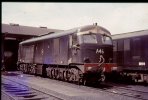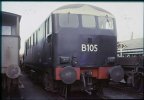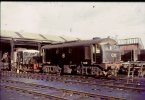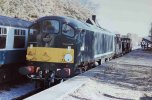Sir Felix Pole
Established Member
Early on in the project, delays within Crossleys prevented a prototype from being built for several months, which in course delayed testing by the same time frame. Even at this early stage, the WAGR Inspectors at Crossleys Openshaw plant were expressing serious concerns about the designs of the engines, particularly the oil passages, bearing sizes , and as a consequence the type of bearings being fitted. Loyalty to the "respected British" led the Assistant Engineer, C W Clarke, to question the skills and experience of the engineer who delivered this report, even though it highlighted the serious problems with this engine early on. Despite his pleading, the inspector was ignored. As the design and testing progressed (now some four months behind schedule) a second unit was run for testing. This demonstrated a high exhaust temperature, and had high levels of lubricating oil consumption. Further improvements were made and a later prototype was built, with the blower being incorporated as part of the engine. This unit also used excessive lubricating oil. Problems were also detected with the fuel injection system, but Crossley persisted with its own design, despite concern from the Inspector. A proposal to use well proven CAV injection equipment was rejected. But following the expiration of Warranty, the WAGR retrofitted CAV systems to the engine.
WAGR Class X
The development and problems of the Crossley HST-V8 engine as used in the 'Co-Bos', but first in the Western Australia Gov Rlys 'X' class is discussed in the above link (partially clipped). Crossleys had already had a disaster with their post-war bus engine, based on a Swiss Saurer design but modified (with dire consequences) to avoid royalty payments. This had already trashed the good reputation of the company, forcing the Crossley Motors part of the business (which built the bus bodies and chassis) to AEC. You do wonder what BR and CIE were thinking of, ordering straight off the drawing board.





